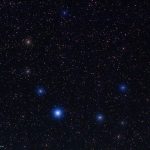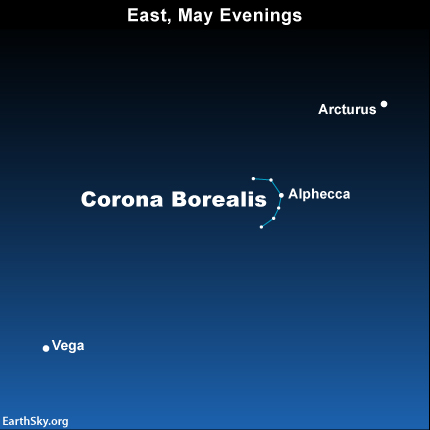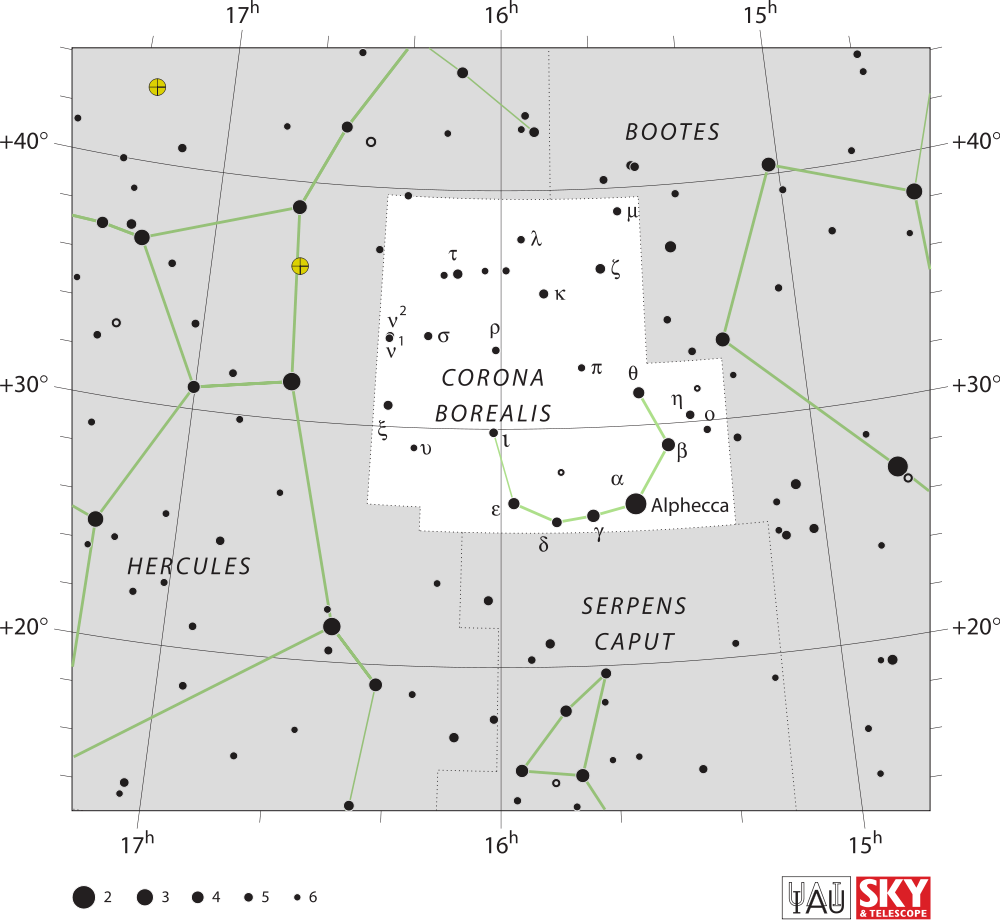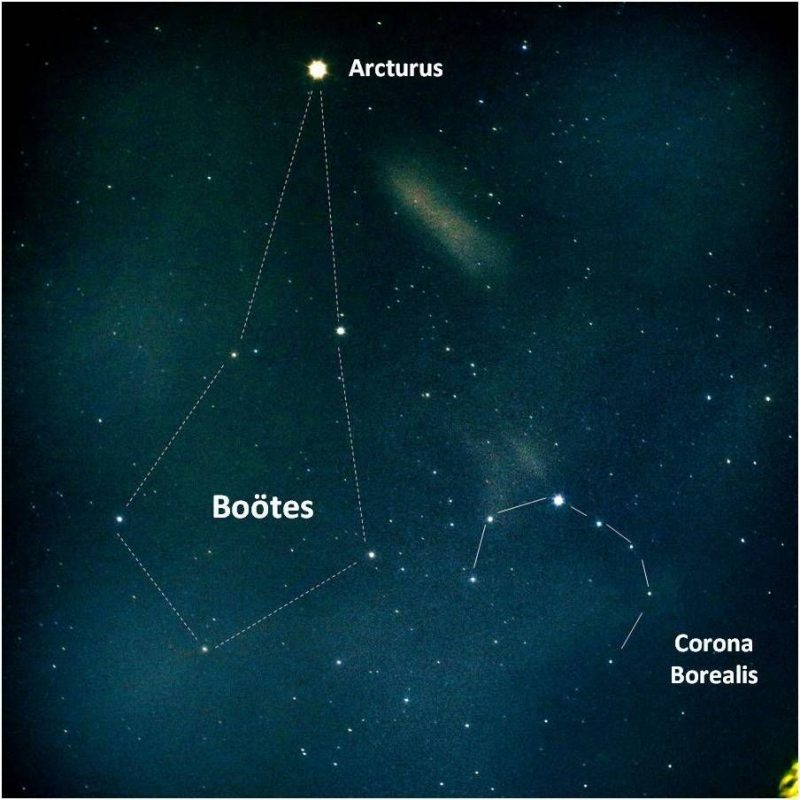
Tonight, look for a constellation that’s easy to see on the sky’s dome, if your sky is dark enough. Corona Borealis – aka the Northern Crown – is exciting to find. It’s an almost-perfect semicircle of stars. You’ll find this beautiful pattern in the evening sky from now until October.
The constellation Corona Borealis is located more or less along a line between two bright stars, Arcturus in the constellation Boötes the Herdsman and Vega in the constellation Lyra the Harp.

At nightfall and early evening, you’ll see Arcturus fairly high in the east to northeast, noticeable for its brightness and yellow-orange color. Vega will be rather low in the northeast – bright and blue-white in color. The Northern Crown is more or less between these 2 bright stars.
You’ll need a fairly dark sky to see Corona Borealis between Vega and Arcturus. It’s a semicircle of stars – very noticeable.
The brightest star in Corona Borealis is Alphecca, also known as Gemma, sometimes called the Pearl of the Crown. The name Alphecca originated with a description of Corona Borealis as the “broken one,” in reference to the fact that these stars appear in a semi-circle, rather than a full circle. Alphecca is a blue-white star, with an intrinsic luminosity some 60 times that of our sun. It’s located about 75 light-years from Earth.

The C-shaped constellation Corona Borealis shines between the constellations Boötes and Hercules. Constellation chart via IAU.

View at EarthSky Conmmunity Photos. | Dr Ski in Valencia, Philippines caught this photo of Arcturus and its constellation Bootes, next to the Northern Crown, on May 24, 2019. Thanks, Dr Ski!
Bottom line: Look for Corona Borealis – the Northern Crown – between the brilliant stars Arcturus and Vega tonight! This constellation is very noticeable, if you have a dark sky.
EarthSky astronomy kits are perfect for beginners. Order today from the EarthSky store
Donate: Your support means the world to us
from EarthSky https://ift.tt/3g1bijV

Tonight, look for a constellation that’s easy to see on the sky’s dome, if your sky is dark enough. Corona Borealis – aka the Northern Crown – is exciting to find. It’s an almost-perfect semicircle of stars. You’ll find this beautiful pattern in the evening sky from now until October.
The constellation Corona Borealis is located more or less along a line between two bright stars, Arcturus in the constellation Boötes the Herdsman and Vega in the constellation Lyra the Harp.

At nightfall and early evening, you’ll see Arcturus fairly high in the east to northeast, noticeable for its brightness and yellow-orange color. Vega will be rather low in the northeast – bright and blue-white in color. The Northern Crown is more or less between these 2 bright stars.
You’ll need a fairly dark sky to see Corona Borealis between Vega and Arcturus. It’s a semicircle of stars – very noticeable.
The brightest star in Corona Borealis is Alphecca, also known as Gemma, sometimes called the Pearl of the Crown. The name Alphecca originated with a description of Corona Borealis as the “broken one,” in reference to the fact that these stars appear in a semi-circle, rather than a full circle. Alphecca is a blue-white star, with an intrinsic luminosity some 60 times that of our sun. It’s located about 75 light-years from Earth.

The C-shaped constellation Corona Borealis shines between the constellations Boötes and Hercules. Constellation chart via IAU.

View at EarthSky Conmmunity Photos. | Dr Ski in Valencia, Philippines caught this photo of Arcturus and its constellation Bootes, next to the Northern Crown, on May 24, 2019. Thanks, Dr Ski!
Bottom line: Look for Corona Borealis – the Northern Crown – between the brilliant stars Arcturus and Vega tonight! This constellation is very noticeable, if you have a dark sky.
EarthSky astronomy kits are perfect for beginners. Order today from the EarthSky store
Donate: Your support means the world to us
from EarthSky https://ift.tt/3g1bijV

Aucun commentaire:
Enregistrer un commentaire